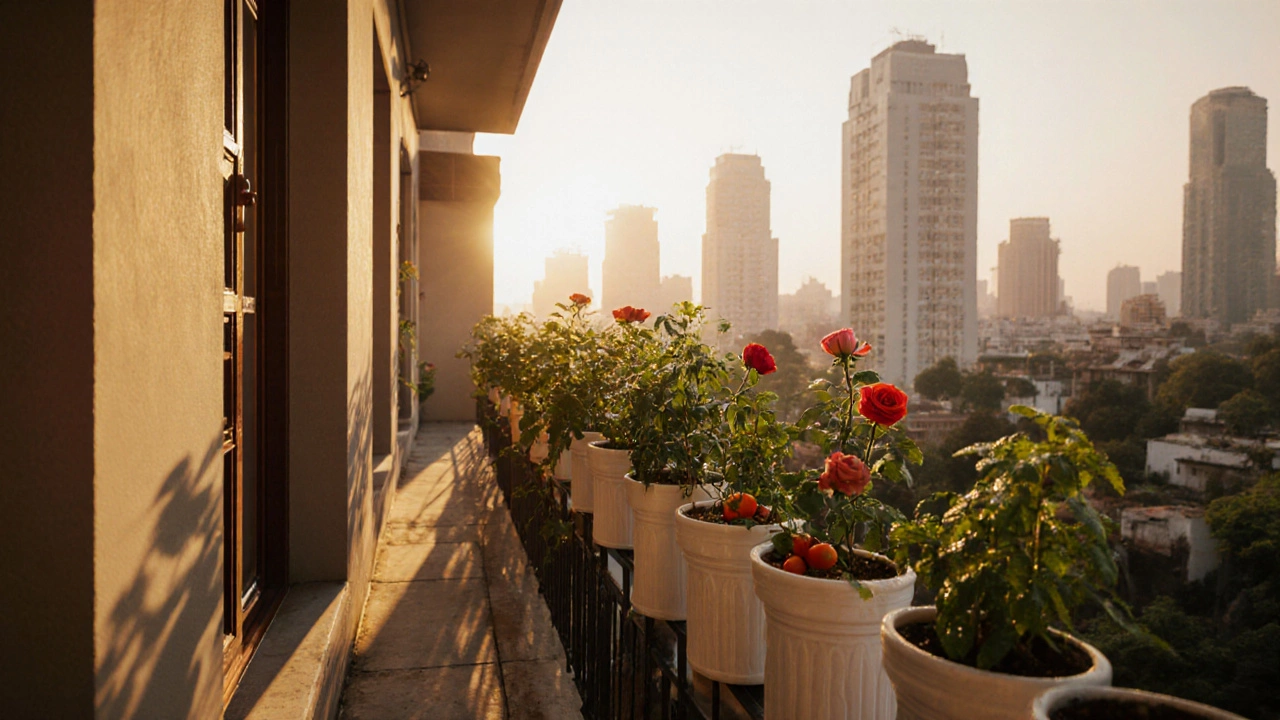Learn which balcony direction captures the most sunlight, how latitude and seasonal sun paths affect light, and get practical tips for choosing plants and maximizing exposure.
Balcony Orientation: Best Sun Exposure for Indian Balcony Gardens
When you're growing plants on a balcony, balcony orientation, the direction your balcony faces and how it catches sunlight throughout the day. It's not just about view—it’s the difference between thriving plants and constant struggle. In India, where summers hit hard and monsoons drench everything, getting the sun right is more important than choosing the fanciest pot. A south-facing balcony gets the most all-day sun, perfect for tomatoes, chillies, and herbs like basil. But a north-facing one? That’s your shady spot for ferns, pothos, and even hydrangeas that burn in afternoon heat.
East-facing balconies are the sweet spot for many gardeners—gentle morning sun, no scorching rays after noon. That’s why plants like jasmine, marigolds, and even some leafy greens do best here. West-facing? That’s the oven. If you’re growing anything there, you need heat-tolerant plants like succulents, lantana, or bougainvillea. And don’t forget wind. Balconies on upper floors get stronger winds, which can dry out soil fast or knock over small pots. A simple screen or a row of tall plants can act as a natural windbreak.
Balcony garden sun exposure, how much direct sunlight your plants receive based on your balcony’s direction and surrounding structures. It’s not just about facing north or south—it’s about what’s blocking the light. A neighboring building, a tree outside, or even your own railing can cast shadows that change with the seasons. Track your balcony’s light pattern for a full day. Mark where the sun hits at 9 a.m., noon, and 4 p.m. That’s your real map, not a generic guidebook rule. You don’t need to be a scientist—just a patient observer. If your basil is leggy and pale, it’s not getting enough sun. If your zinnias are wilting by 2 p.m., they’re getting too much. Adjust. Move pots. Use trays to reflect light. Even small changes make a big difference.
And here’s the thing: Indian balcony gardening, the practice of growing food, herbs, and flowers on urban balconies using local climate knowledge and space-saving techniques. It’s not a trend—it’s survival. With more people living in apartments, balconies are the only soil many of us have. That’s why the posts below focus on real, tested solutions: which plants bloom all year in Indian heat, how to fix clogged drip lines on narrow balconies, why some flowers die in afternoon sun, and how to pick the right pots for your specific light conditions. You’ll find guides on hydrangeas that won’t burn, fast-growing veggies that fit in 12-inch pots, and how to use shade cloth without making your balcony look like a greenhouse. No fluff. No theory. Just what works on a Delhi balcony, a Mumbai terrace, or a Bangalore apartment ledge.
Stop guessing where to place your plants. Start matching your balcony’s real sun pattern with what your plants actually need. The right spot turns a struggling greenery into a daily joy—and a steady supply of fresh herbs or flowers. Below, you’ll find exactly how to do that, based on what hundreds of Indian gardeners have tried, failed at, and finally got right.
